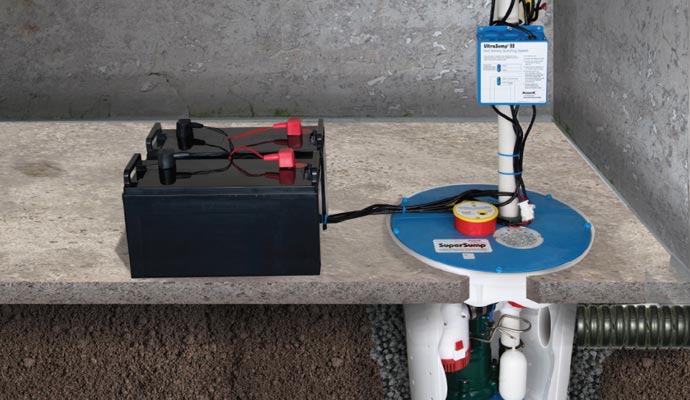Sump Pump Maintenance Guide
When a severe storm hits, homeowners may experience excess water in their basements or the lower levels of their home. A sump pump is an important tool that can help protect your property by controlling water and keeping your home dry.
Sump pumps are typically found in the lowest part of a house, such as a basement, and are usually installed by a professional in a specially constructed sump pit. The sump pump’s primary job is to pump water outside and away from the home. There are generally two types of sump pumps, pedestal and submersible.
How to Keep Your Sump Pump in Good Condition
Once installed, consider the following maintenance tips to help ensure your sump pump is ready when you need it. Check the pump every so often to make sure it is still in good working condition and working properly.
1. Check the Float
The float is a vital part of a sump pump, and it is also one of the most vulnerable. The float rises with water in the sump pit, which in turn triggers the pump to start pulling water out of the pit. To check the float, slowly pour some water into the pit. If the float rises with the water and the pump activates and then shuts off when the water has been removed, you’re in luck. Repeat this test every few months.
2. Clean the Sump Pit
Debris in the sump pit is a major cause of float problems. Even if your pump is working as it should, cleaning out the pit should be a regular part of sump pump repair and maintenance. Remove any loose items in the pit.
3. Test the Check Valve
If you pour water into the sump pit and, instead of triggering the pump and removing the water, water just returns to the pit, you probably need to replace the check valve.
4. Clean the Impeller
Keeping debris out of the sump pit is an important part of sump pump repair and maintenance. Sometimes, however, debris can work itself past the screen in a sump pump and jam the impeller. To see if this is your problem, first unplug the pump, then disconnect it from the piping and remove the pump from the pit. Disassemble the pump to access the screen and impeller. Remove any debris, reassemble and replace the pump.
5. Check the Electricity
If the sump pump does not seem to be working at all, check the electrical connections. Make sure the pump is plugged in properly, and check the circuit breaker. Pay special attention to the ground fault circuit interrupter if your pump is connected to one, as these have a tendency to trip. Press the reset button on the GFCI. If the electrical supply seems fine, chances are good that your pump needs replacement.
Details
Published: 19 May 2017

















